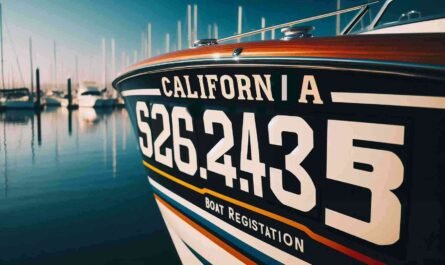Boat Life Jacket Saves Lives
Picture this: You’re out on a boat, soaking up the sun, the breeze on your face, and not a care in the world. Then, in a blink, something goes wrong—you slip, the boat rocks unexpectedly, or maybe you get tossed overboard. What happens next could depend on one simple thing: Are you wearing a life jacket?
Many of us think, “I can swim. I’ll be fine.” But even strong swimmers can struggle in an emergency situation. In this post, we’ll dive into the top reasons why wearing a life jacket can literally save your life—and why it should be as common as putting on a seatbelt.
Why Life Jackets Are So Important
A life jacket isn’t just a floaty vest—it’s a life-saving tool. According to boating safety experts and countless statistics, life jackets dramatically increase your chances of surviving a fall into the water. Yet many people still leave them stored under the seat or stashed away when they should be wearing them.
Let’s look at the reasons why life jackets matter—especially when the unexpected happens.
1. Accidents Happen Fast
One of the biggest misconceptions people have about boating accidents is that they’ll have time to react. Reality check: most drownings happen suddenly, and there’s rarely time to grab a jacket once you’re in the water.
Whether it’s a collision, a quick turn, or someone slipping off the deck, these things happen in seconds. That split second may not give you time to reach for that life jacket under the seat.
When you’re already wearing it, you’re prepared—no scrambling needed.
2. Cold Water Shock Is Real
Did you know that falling into cold water can knock the wind out of you—literally?
Even in warmer climates, water temperatures can be surprisingly low, especially in early spring or late fall. When you hit cold water, your body can experience something called cold water shock. Your muscles may seize, your breathing becomes rapid, and swimming becomes nearly impossible.
A life jacket helps you stay above the surface while your body adjusts—giving you precious moments to catch your breath and call for help.
3. Head Injuries Can Happen During a Fall
Imagine slipping off the side of the boat and hitting your head on the way down. You could become unconscious instantly. No ability to swim. No ability to call for help.
This is when a life jacket really earns its keep. Most personal flotation devices are designed to keep your head above water—even if you’re unconscious—so rescuers have time to reach you.
4. Life Jackets Help Even Experienced Swimmers
Can you swim? Great—but in a panic, even the best swimmers struggle. Add strong currents, rough waves, or rain, and it’s a recipe for fatigue and fear.
Plus, what happens if you have an unexpected medical emergency—like a heart issue or cramp—while in the water? A life jacket provides automatic buoyancy, giving you a fighting chance if things go sideways.
5. Children Are at Higher Risk
Let’s be honest—kids are unpredictable.
They can move quickly, lean over the edge, and before you know it, they’re in the water. Young children often panic or forget swimming skills in emergencies. That’s why it’s especially critical for children to wear life jackets at all times while boating or playing near the water.
The U.S. Coast Guard requires children under 13 to wear life jackets on moving boats—and that rule exists for good reason.
6. Weather Can Change in a Heartbeat
Sunny skies can turn stormy in minutes. Winds pick up, waves swell, and suddenly your peaceful ride becomes a struggle to stay upright.
A rough ride makes mobility tough—and slipping becomes easy.
Keeping your life jacket on during uncertain conditions can be a game-changer if you’re tossed overboard or the boat capsizes.
7. Visibility and Rescue
Falling overboard is scary, but what’s scarier is not being seen by rescuers.
Many life jackets come with bright colors, reflective tape, and even built-in whistles—making them easier to spot in the water. In low light or stormy conditions, that visibility could mean the difference between a quick rescue and a tragic ending.
Tips for Choosing the Right Life Jacket
Not all life jackets are created equal. It’s important to wear one that fits well and suits your water activity—whether you’re boating, kayaking, or just fishing off the dock.
- Make sure it fits snugly—not too tight, but not loose either.
- Choose a U.S. Coast Guard-approved PFD (Personal Flotation Device).
- Pick a jacket designed for your activity—sailing and paddleboarding may require different styles.
- Check for damage or wear before each outing. A damaged life jacket won’t help in an emergency.
PRO TIP: Try it on in the store or at home. If it rides up too high when you raise your arms, it may not be the right fit.
Still Not Convinced?
Here’s a quick stat that might make you think twice:
According to the U.S. Coast Guard, 86% of drowning victims in boating accidents were not wearing a life jacket.
That’s not a coincidence—it’s a pattern. And it’s one we can change by simply wearing our life jackets every time we’re out on the water.
Final Thoughts: Make Life Jackets Part of the Plan
Life jackets shouldn’t be an afterthought or a backup plan—they should be your first line of defense on the water. Boating, fishing, paddleboarding, or even just hanging out by a dock—wearing a life jacket can quite literally be the difference between life and death.
Start a new habit today: Put it on before you leave the dock. Encourage your guests, your kids, and your friends to do the same. Make it a non-negotiable—just like putting on a helmet or fastening your seatbelt.
Remember, the best life jacket is the one you’re actually wearing.
Stay Safe Out There
Water adventures should be fun, but safety always comes first. So the next time you head out, ask yourself: Am I prepared for the unexpected?
If the answer is yes—and you’ve got that life jacket on—you’re already ahead of the game.
Safe boating, and we’ll see you out on the water!







